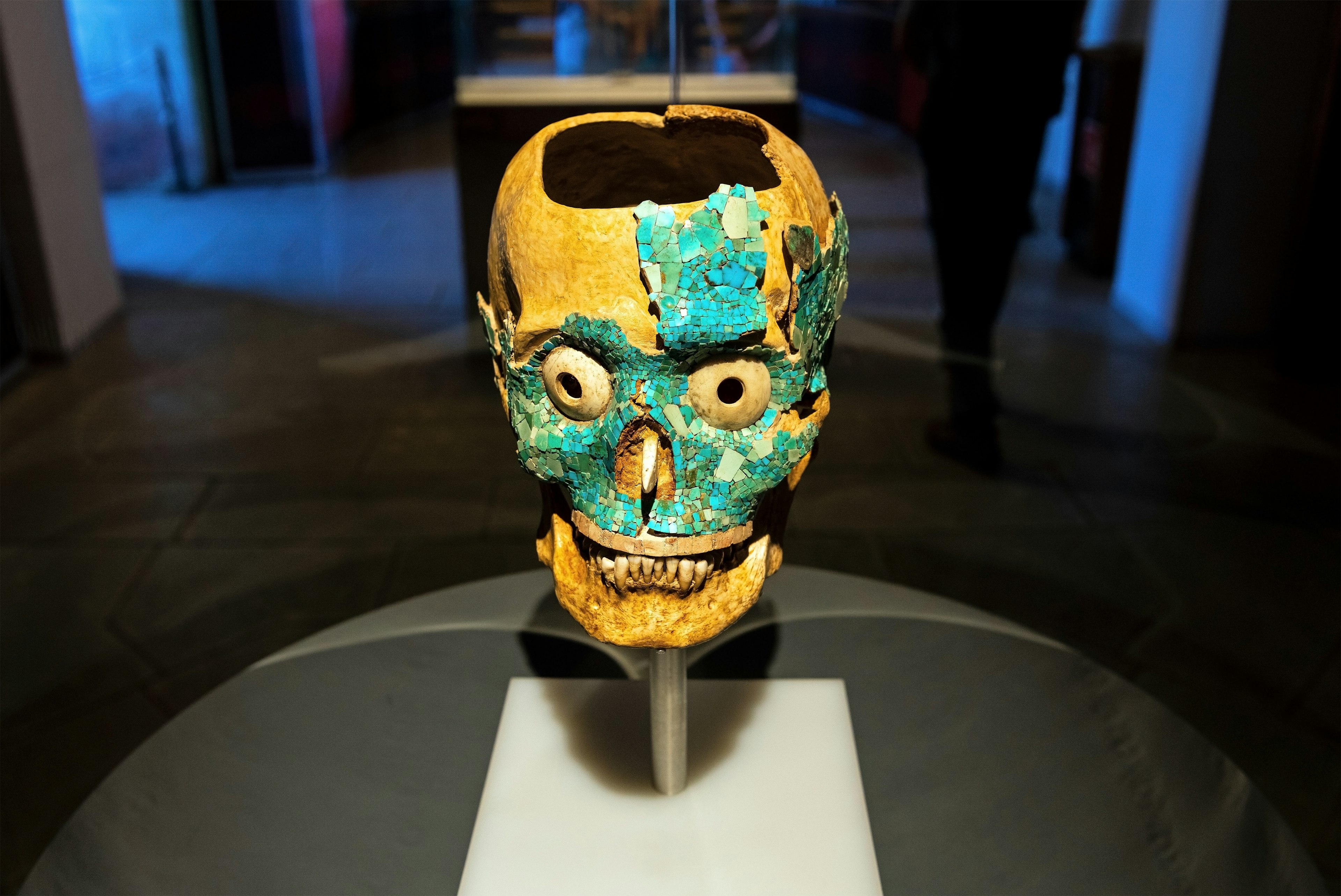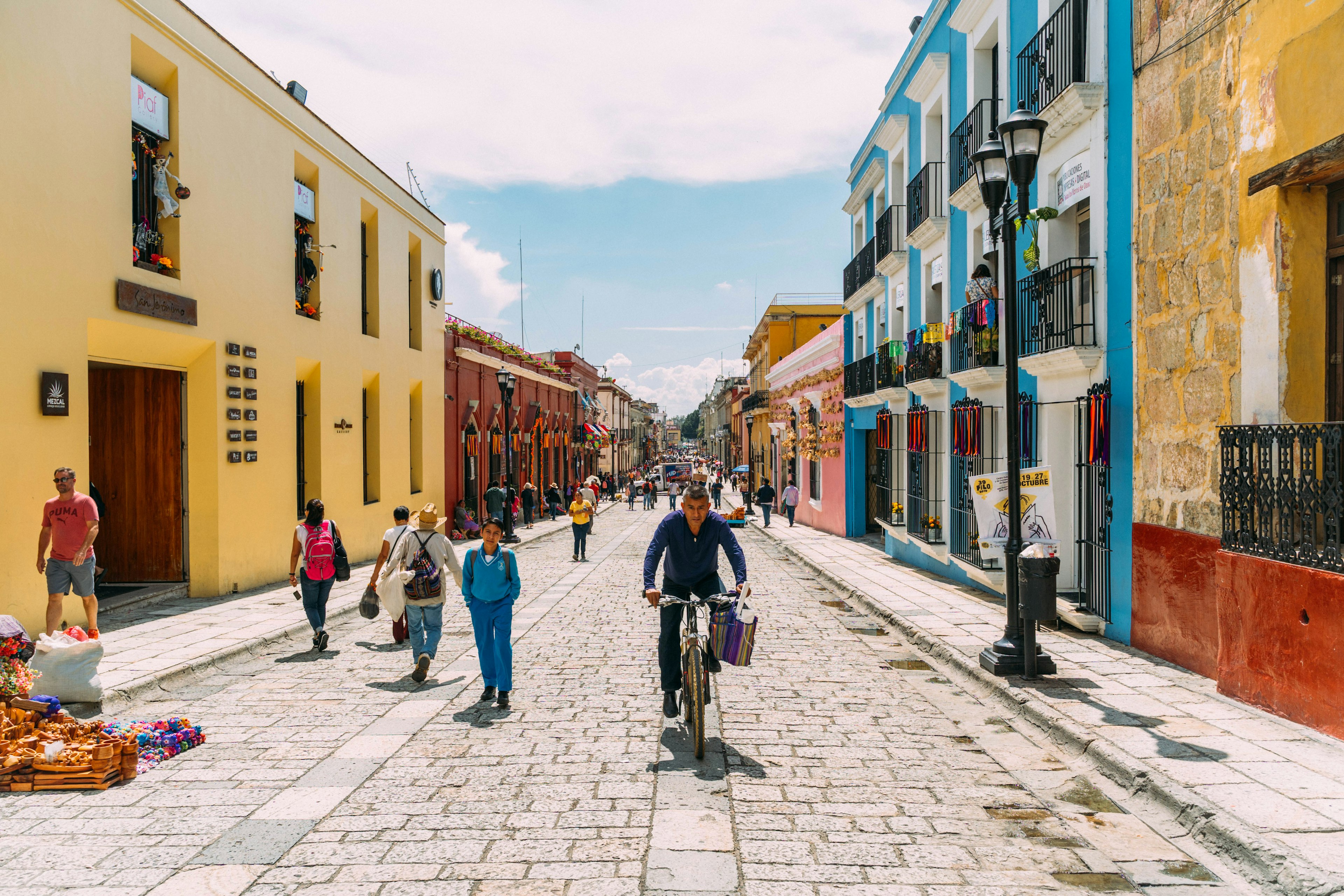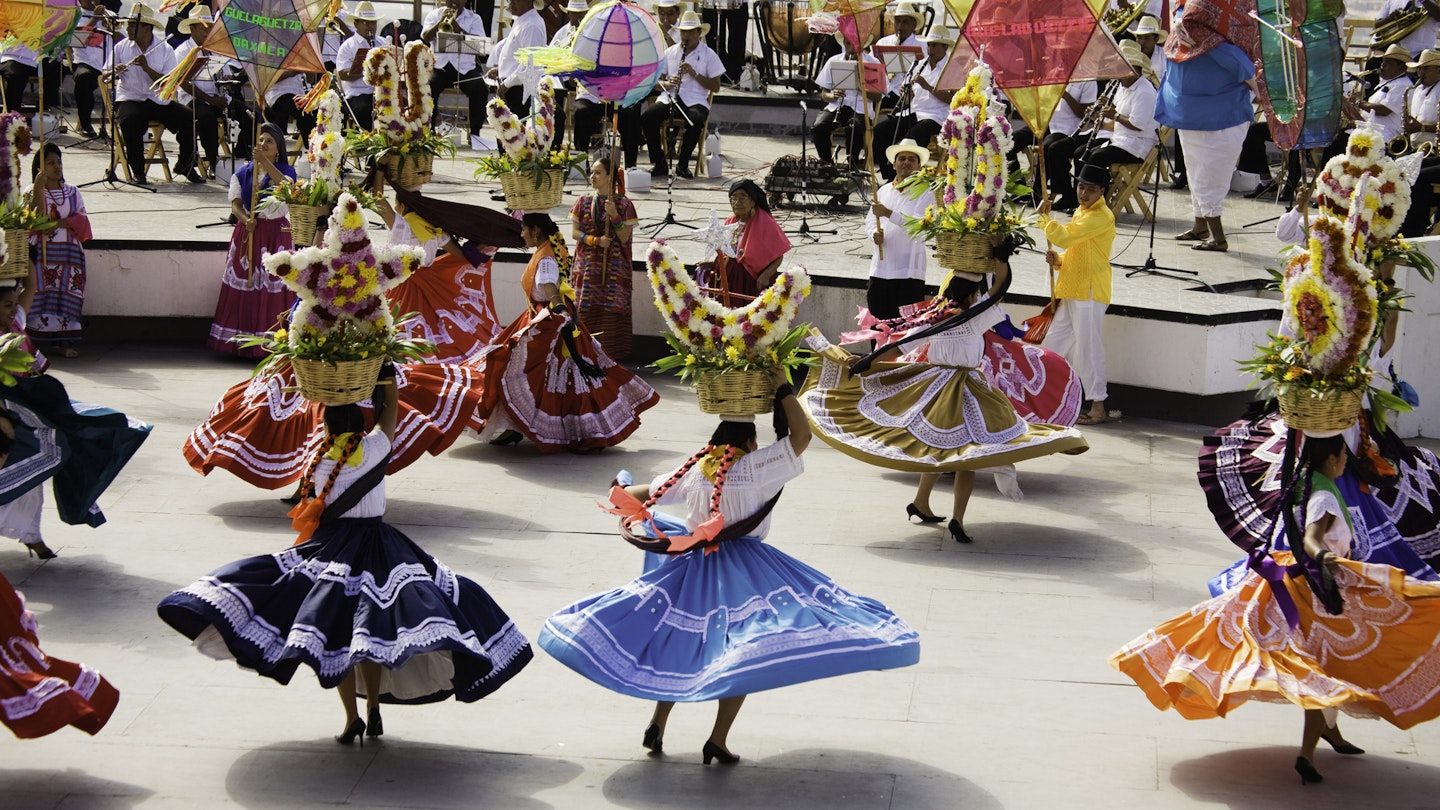Top Things to Do in Oaxaca, Mexico
Few regions in Mexico conjure up as many superlatives as Oaxaca. The state and capital city of the same name are home to arguably the country’s best regional cuisine, an unparalleled arts-and-crafts scene, the finest mezcal in the land, and, dare we say, some of the nation’s most exciting cultural events and community-tourism ventures. While understanding no list could do such a rich place justice, here are our picks for the top things to do in Oaxaca.
Gaze at Monte Albán’s Ruins with a View
Rising 1300ft from the valley floor and affording eye-popping views over the city and beyond, the ancient Zapotec ruins at Monte Albán have deservedly landed them on just about any Oaxaca must-do list. You’ll understand why when you behold the mysterious architecture set against the vista-rich backdrop.
Sure, Oaxaca’s most popular archaeological site feels busy at times, especially on weekends; however, an early-morning visit allows you to contemplate its striking temples and ceremonial platforms in all their glory, and without the tour-bus crowds.
Hike amid the Pueblos Mancomunados’ Mesmerizing Mountain Landscapes
The Pueblos Mancomunados (Commonwealth of Villages), a cluster of eight remote communities scattered among a biodiverse cloud forest, are linked by some 60 miles of trails that lead to canyons, caves, and cascading waterfalls.
Moreover, a day trip or multi-day hike here provides an up-close look at Zapotec life. In hospitable mountain communities, you can look forward to cabin rentals and roadside diners whipping up hearty Oaxacan comfort food such as memelas (handmade corn tortilla snacks) topped with wild mushrooms.
Tap into the Underground Art Scene
The city’s provocative street art has long been instrumental in shaping ideas around some of the most important social and political issues facing Oaxaca, and the counterculture movement remains very much alive and kicking.
As you wander downtown amid the stunning colonial architecture, you’ll come across a slew of satirical graffiti, surreal murals, and indie art collectives that create stunning stencils and cutting-edge crafts.

Embrace Day of the Dead
With its deeply rooted pre-Hispanic traditions, Oaxaca makes for one of the most colorful Day of the Dead experiences in Mexico. Come November 1 and 2, markets throughout the city sell fresh-baked pan de muerto (a seasonal pan dulce). Vivid orange-and-purple altars pop up on public squares. Soulful parades roll through downtown’s cobbled streets.
Escape to Remote Mixtec Village Santiago Apoala
Leave the hectic city behind and unwind in the majestic mountains of Santiago Apoala, a remote Mixtec village several hours north of the city. Community tour operators provide rustic riverside cabins and guided hikes to a glorious 200-foot waterfall amid deep canyons dotted with ancient rock carvings.
Drink Artisanal Mezcal
Even if you’re not much of a drinker, it’s always intoxicating to take a deep dive into the wonderful world of mezcal (a distilled alcoholic agave drink). A road trip to mezcal country in nearby Santiago Matatlán lets you see the production process at family-run distilleries, then sample the final product.
In the city, mezcalerías and tasting rooms provide more details about the production techniques and various agave plants used to make Oaxaca’s signature spirit. In fact, much of Oaxaca’s nightlife centers around these intimate, character-filled mezcal joints.
Hit the Highway toward Mitla
For a classic Oaxacan road trip, Hwy 190 heading east takes you to the world’s fattest tree in El Tule, the famous weaving town of Teotitlán del Valle, the sophisticated Zapotec ruins of Mitla, and mezcal region Santiago Matatlán.
The route along a traffic-free, two-lane highway cuts through scenic valley lands. If you have time, take a 14-mile detour to Hierve el Agua for a dip in spectacular cliffside mineral springs – but be forewarned that the site often closes due to administrative conflicts.

Brush Up on History at Museo de las Culturas de Oaxaca
If you only have time to visit one museum while in Oaxaca, make it this gem. Granted, you’ll need at least a couple of hours to explore the 14 halls housed in the museum’s sprawling campus – a former monastery – but the impressive architecture is worth the price of admission alone.
Displays in the Museo de las Culturas de Oaxaca are devoted to regional history and culture, from the pre-Hispanic era to present day. In Room III, don’t miss the intriguing treasure trove of 14th-century Mixtec artifacts discovered at Monte Albán.
Whoop it Up at Guelaguetza Fest
An annual indigenous cultural event meaning “offering” in Zapotec, Guelaguetza is one of Oaxaca’s most important annual fiestas. The epic July shindig showcases Oaxaca’s proud tradition of folkloric dance and music. The celebration also features art exhibits, a mezcal fair, lively downtown concerts and parades.
Smaller versions of Guelaguetza take place throughout Oaxaca, including festivals in the outlying towns of Tlacolula and Atzompa.
Eat Like a Local in the Mercados
Grasshoppers, anyone? Look for these crunchy treats (known in Spanish as chapulines) at the iconic Mercado 20 de Noviembre. The busy market is revered for its pasillo de humo, a smoky passage where tasajo (beef) and cecina enchilada (chili-coated pork) are grilled for your taco-eating pleasure.
For breakfast, greet the new day at Fonda Florecita in the less-visited Mercado de la Merced and try the zesty salsa de queso along with a chocolate atole.

Cycle through History
With some 1200 historic monuments, Oaxaca’s Centro Histórico richly deserves its UNESCO World Heritage badge. The plethora of landmarks includes splendid baroque churches and palatial colonial buildings that can all be visited on foot. However, you’ll cover much more ground and grasp the history better on two wheels.
Shop for Traditional Crafts
Oaxaca produces some of the highest-quality folk art in the nation. Stores and galleries sell everything from polished barro negro (black pottery) and alebrijes (brightly painted animal sculptures) to hand-woven rugs and crafty palm-leaf baskets. It’s always best to go straight to the source to guarantee the money goes directly to the artisans.
Delight in Savory Moles
Nothing says Oaxaca quite like its multicolored moles (rich nut-, chili-, and spice-based sauces). The depth and variety of this iconic dish here is impressive. Dig into a complex black or red mole entrée or enjoy delectable mole tamales at a popular downtown street stall. To learn how to make mole yourself, take a cooking class with culinary mavens.
Day-trip to San Agustín Etla
Sitting about 11 miles northwest of Oaxaca, this small town at the foothills of the Sierra Madre mountains provides a welcome respite from the bustling city, known for first-rate art exhibits and concerts.
Soak Up the Coffee Culture
The highlands of Oaxaca produce some of the richest beans in the world, so it should come as no surprise that cafes in the capital take their coffee seriously. Standouts have made a name for themselves with their superior brews and delightful pastries.




